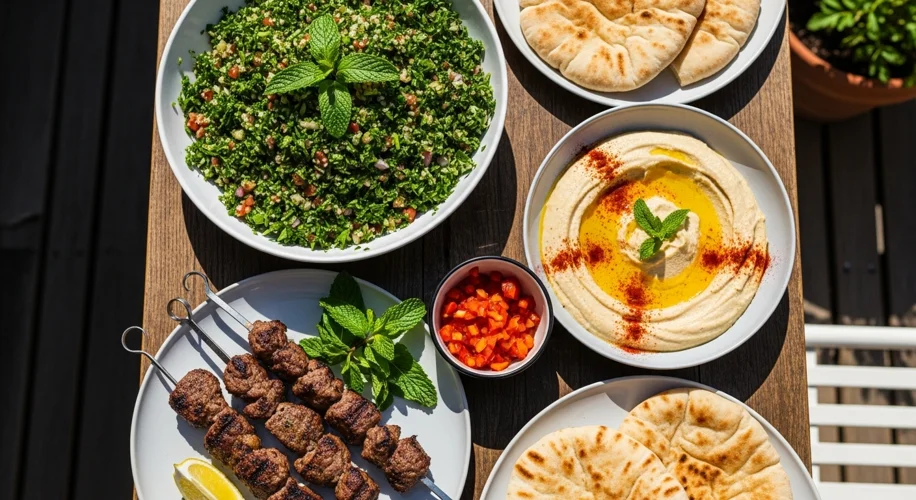Hello everyone! Elias here.
Lately, I’ve been thinking a lot about the food we eat, and it’s always brought me back to my garden. The fresh vegetables, the herbs growing wild – they’re the heart of so many delicious meals. And when I think about ingredients that truly sing, my mind often drifts to the beautiful, sunny shores of the Mediterranean.
You know my love for olive oil – I’ve written about it plenty! But the Mediterranean offers so much more than just that golden elixir. It’s a whole world of flavors, textures, and traditions that are not only incredibly tasty but also incredibly good for you. Today, I want to take you on a little journey through this incredible cuisine.
What Exactly is Mediterranean Cuisine?
It’s not just one country’s food, but rather a collection of cooking styles from the countries bordering the Mediterranean Sea. Think of Italy, Greece, Spain, Morocco, Turkey, and parts of the Middle East. What ties them together? A focus on fresh, seasonal ingredients, plenty of healthy fats, and simple preparations that let the natural flavors shine.
The Stars of the Show: Key Ingredients
- Olive Oil: We have to start here! High-quality olive oil is the backbone of Mediterranean cooking. It’s used for everything from dressing salads to sautéing vegetables and even baking. Its fruity notes and healthy fats are irreplaceable.
- Fresh Produce: This cuisine is bursting with vegetables and fruits. Tomatoes, cucumbers, bell peppers, eggplant, zucchini, lemons, figs, pomegranates – the list is endless. These form the base of many dishes, providing color, vitamins, and fiber.
- Legumes: Lentils, chickpeas, and beans are staples. They’re packed with protein and fiber, making dishes hearty and satisfying. Hummus, made from chickpeas, is a perfect example. It’s creamy, delicious, and surprisingly simple to make.
- Grains: Whole grains like barley, couscous, and bulgur wheat are common. Bulgur is the star of tabbouleh, a refreshing salad packed with parsley, mint, and lemon. It’s a fantastic way to use up fresh herbs from the garden!
- Herbs and Spices: Fresh herbs like parsley, mint, basil, oregano, and dill are used generously. Spices like cumin, coriander, paprika, and cinnamon add warmth and depth, especially in dishes from the eastern Mediterranean and North Africa.
- Lean Proteins: Fish and seafood are prominent, especially in coastal regions. Grilled meats, like lamb and chicken, are also popular, often marinated in herbs and lemon.
A Few Mediterranean Delights to Try
- Hummus: As I mentioned, this creamy chickpea dip is a winner. Serve it with warm pita bread and some fresh veggies from your garden. It’s also amazing as a spread on sandwiches.
- Tabbouleh: This vibrant salad is a celebration of fresh herbs. Finely chopped parsley and mint, mixed with bulgur wheat, tomatoes, onions, and a zippy lemon-olive oil dressing. It’s light, refreshing, and perfect for a summer meal.
- Grilled Meats: Whether it’s skewers of lamb kofta marinated in garlic and cumin, or chicken souvlaki with a lemon-oregano rub, grilling brings out fantastic flavors. These are often served with a side of tzatziki or a fresh tomato salad.
- Fattoush: Another delicious salad, often featuring toasted or fried pieces of pita bread along with mixed greens, vegetables like tomatoes, cucumbers, and radishes, and a sumac-based dressing.
Connecting It Back to the Garden
What I love most about Mediterranean food is how well it aligns with the principles of gardening and sustainable eating. It’s all about using what’s in season, celebrating fresh produce, and minimizing waste. Many of these dishes are simple, requiring minimal cooking and letting the quality of the ingredients shine. It’s a philosophy that nourishes both body and soul.
So, the next time you’re in the kitchen, why not bring a little bit of Mediterranean sunshine to your table? Grab some fresh ingredients, perhaps some from your own garden, and experiment with these bright, healthy flavors. Your taste buds (and your body) will thank you!
Happy cooking and happy gardening!
Elias

